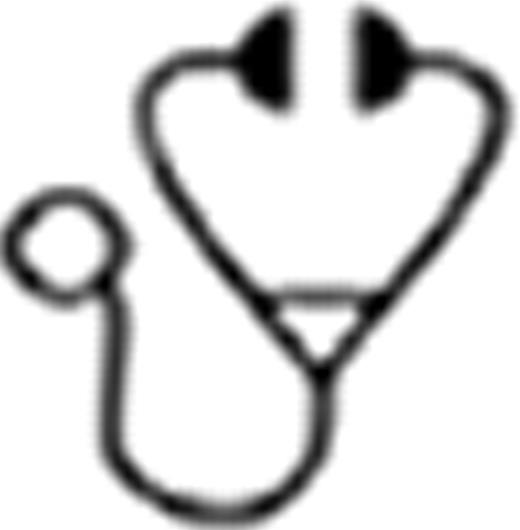Abstract
Abstract  660
660
TP53 is the most frequently mutated gene in cancer. An association of TP53 mutations and adverse prognosis was shown in multiple malignancies. In AML, a high frequency of TP53 alterations has been reported in cases with complex karyotype. However, thus far, a comprehensive study analyzing the impact of TP53 alterations has been lacking.
1. Determine the frequency of TP53 mutations (TP53mut) and TP53 deletions (TP53del) in a large cohort of AML. 2. Analyze the relation of TP53mut and TP53del with cytogenetics and other molecular mutations. 3. Evaluate the impact of TP53 alterations on outcome.
In 1,000 AML patients (median age 66.8 yrs) the TP53 gene (exons 4–11) was analyzed to detect mutations by either DHPLC with subsequent direct Sanger sequencing (n=190) or a next-generation amplicon deep-sequencing assay (n=810) (454 Life Sciences, Branford, CT). All cases with available material (n=858) were analyzed by interphase FISH for TP53del. In all cases the karyotype was available and categorized according to the refined MRC classification (Grimwade et al., Blood 2010). Cases were also screened for mutations in NPM1 (n=966), CEPBA (n=997), RUNX1 (n=907), ASXL1 (n=937) as well as for FLT3-ITD (n=999) and MLL-PTD (n=952). Clinical follow-up data was available in 841 patients.
In 115 patients (11.5%) a total of 131 TP53mut were detected. 99 patients showed one and 16 cases two TP53 mutations. Heterozygous deletions of the TP53 gene were detected by FISH in 55/858 (6.4%) patients. In 97/115 cases with TP53mut also the TP53del status was available: 41/97 (42.3%) cases harbored both a TP53mut and a TP53del. 32 of the 56 (57.1%) TP53mut cases without TP53del showed heterozygous and 24 (42.8%) homozygous TP53mut. 13/32 (40.6%) cases with heterozygous mutations harbored two distinct TP53mut, whereas only 19/32 (59.3%) were affected by one mutation suggesting a dominant negative effect of these mutations. In patients with homozygous mutations and no TP53del a copy neutral loss of heterozygosity (CN-LOH) can be assumed. In 2 of these patients SNP microarray data was available revealing in both cases a CN-LOH spanning from 17p11.2 to 17p13.3.
TP53mut were observed in 1/106 cases with favorable, 12/688 with intermediate (1.7%), and 17/90 (18.9%) with adverse cytogenetics. In cases with complex karyotype TP53mut frequency was 73.3% (85/116). TP53mut were mutually exclusive of CEPBA and NPM1 mutations. In patients harboring TP53mut FLT3-ITD, MLL-PTD, RUNX1 and ASXL1 mutations were detected at low frequencies (2.6%, 4.3%, 7.8% and 4.3%, respectively). TP53del were observed in 2/88 (2.3%) patients with favorable, in 6/601 (1.0%) with intermediate, and in 47/169 (27.8%) cases with adverse cytogenetics. 39/47 (83.0%) patients with adverse cytogenetics and TP53del harbored a complex karyotype. 41/55 (74.5%) cases with TP53del also harbored a TP53mut.
Median OS in patients with TP53mut (n=80) vs TP53 wild-type (wt) cases (n=761) was 4.6 vs 35.6 months (mo) (P<0.001), median EFS was 3.1 vs 13.3 mo (P<0.001); OS and EFS at 3 yrs was 0% vs 49.6% and 0% vs 33.8%. Within the complex karyotype cohort, patients with TP53mut (n=56/80) showed an inferior outcome compared to TP53wt cases (n=24/80) (OS and EFS at 3 yrs: 0% vs 27.9%, P=0.002, 0% vs 25.7%, P=0.002). In univariable Cox regression analyses TP53mut and TP53del were significantly associated with shorter OS (hazard ratio (HR) 3.49; P<0.001 and 2.33; P<0.001). Additionally, in multivariable Cox regression analysis the following parameters were included (which were also significantly associated with OS in univariable analysis): favorable and adverse cytogenetics, complex karyotype, monosomal karyotype, CEPBA double-mutations, NPM1mut/FLT3-ITD-, MLL-PTD, RUNX1, and ASXL1 mutations. Independent prognostic factors were: complex karyotype (HR 1.64, P=0.05), CEPBA double-mutations (HR 0.30; P=0.002), NPM1mut/FLT3-ITD- status (HR 0.62; P=0.004), ASXL1mut (HR 1.46; P=0.016), and TP53mut (HR 2.17; P<0.001).
1. TP53mut occurred in 11.5% and TP53del in 6.4% of AML patients and both showed a close association with adverse karyotype, especially complex karyotype. 2. TP53mut was the parameter with highest risk for adverse outcome compared to any other known genetic risk marker in AML thus far.
Haferlach:MLL Munich Leukemia Laboratory: Equity Ownership. Grossmann:MLL Munich Leukemia Laboratory: Employment. Eder:MLL Munich Leukemia Laboratory: Employment. Kohlmann:MLL Munich Leukemia Laboratory: Employment. Kern:MLL Munich Leukemia Laboratory: Equity Ownership. Schnittger:MLL Munich Leukemia Laboratory: Equity Ownership. Haferlach:MLL Munich Leukemia Laboratory: Equity Ownership.
Author notes
Asterisk with author names denotes non-ASH members.

This icon denotes a clinically relevant abstract

This feature is available to Subscribers Only
Sign In or Create an Account Close Modal